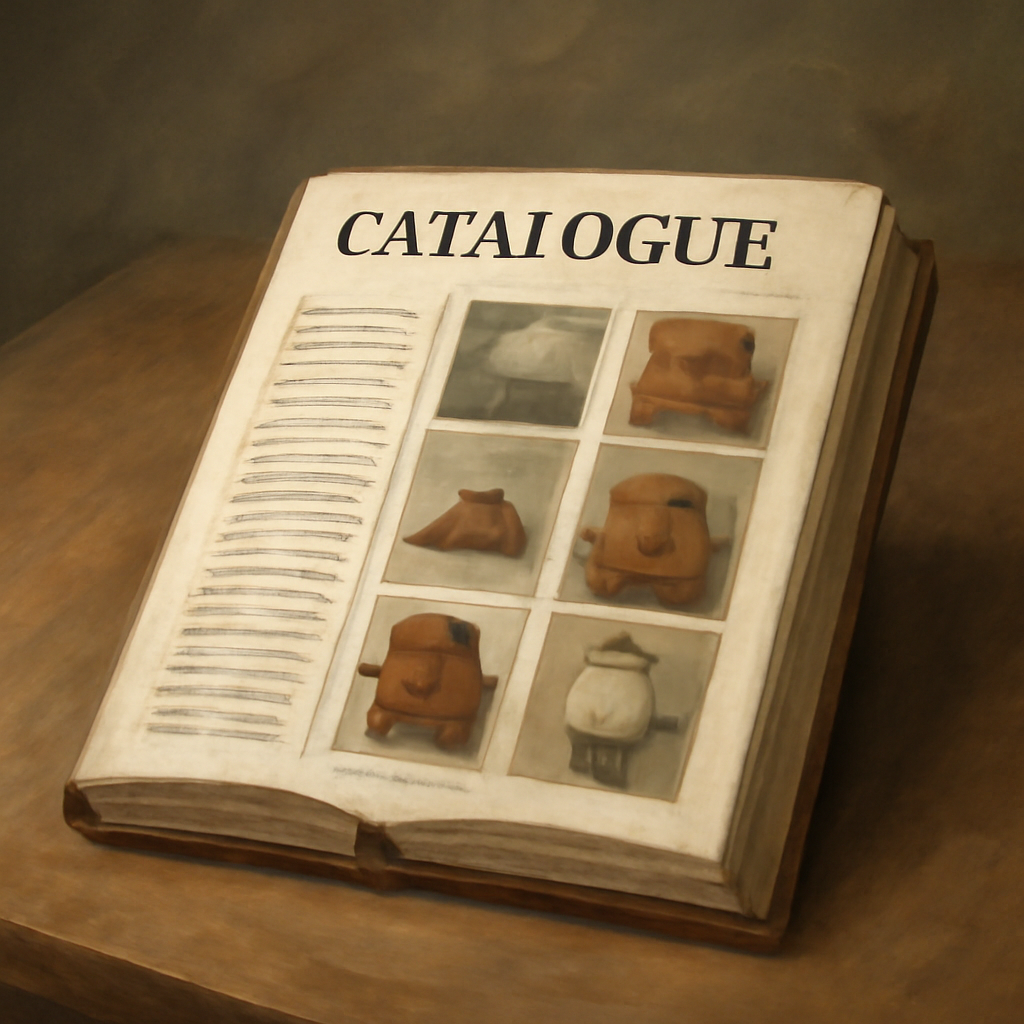Key Takeaways
- Catalogue defines the official divisional boundaries recognized by governments, often used for diplomatic and administrative purposes.
- Inventory refers to the actual physical or administrative records of regions, sometimes including disputed or unrecognized areas.
- The distinction between Catalogue and Inventory is crucial in understanding how geopolitical boundaries are officially recognized versus practically managed.
- Discrepancies between Catalogue and Inventory can lead to international conflicts or diplomatic disputes over borders.
- While Catalogue is more static and formal, Inventory is subject to change based on political, social, or military developments.
What is Catalogue?

In the context of geopolitics, a Catalogue serves as the authoritative list of recognized borders and sovereign territories, compiled by governments or international organizations. It acts as the formal record of boundary delineations which is accepted for diplomatic, legal, and administrative purposes.
Official Recognition and Diplomatic Utility
The Catalogue functions as the definitive source for border recognition, often used in treaties, diplomatic negotiations, and international law. Countries rely on it to assert sovereignty, settle disputes, or establish jurisdictional authority. For example, the United Nations maintains a list of member states with their recognized boundaries, which becomes a reference point in international dealings.
This formal recognition influences how countries interact and resolve territorial disagreements. An officially recognized Catalogue can prevent disputes from escalating into conflicts by providing clarity and legitimacy. When a border is listed in the Catalogue, it often becomes the basis for international consensus and legal enforcement.
However, the process of updating a Catalogue can be complex, involving diplomatic negotiations, historical claims, and sometimes international arbitration. Countries may contest entries or seek modifications to reflect new political realities, making the Catalogue a living document subject to change.
Moreover, the Catalogue’s authority is sometimes challenged by non-recognized entities or regions with de facto control but lacking international acknowledgment. In such cases, the Catalogue’s role becomes more contentious and less universally applicable.
This official record influences global diplomacy, border treaties, and recognition status, shaping the geopolitical landscape over time. It also impacts how international organizations approach sovereignty, peacekeeping, and territorial integrity issues.
Historical Development and Updating
The creation of a Catalogue often stems from historical treaties, colonial legacies, and diplomatic negotiations. Many boundaries listed today have evolved over centuries, reflecting colonial borders, wars, and diplomatic compromises. Countries regularly update these records to mirror political changes, such as independence declarations or border disputes resolution.
Updating a Catalogue can be a lengthy diplomatic process involving negotiations, evidence submissions, and sometimes international court rulings. For instance, the boundary changes in Europe after World War II prompted revisions to national boundary lists. These updates are often documented in official gazettes or international records.
In some cases, a Catalogue may include different levels of recognition—fully recognized borders and disputed or provisional ones—highlighting the fluidity of geopolitical boundaries. Although incomplete. Disputes over updating entries can stall diplomatic progress, especially when sovereignty claims are contested.
Technological advancements like GIS and digital mapping have improved the accuracy and accessibility of Catalogue updates, enabling real-time revisions and international collaboration. Yet, political will remains the most significant factor in whether changes are accepted or resisted.
Ultimately, a Catalogue reflects the status quo of international recognition, but it are also a tool for asserting sovereignty, influencing diplomatic negotiations, and guiding international policy decisions.
Impact on International Law and Dispute Resolution
The Catalogue plays a pivotal role in shaping international legal frameworks concerning borders and sovereignty. When disputes arise, the officially recognized boundaries in the Catalogue often form the legal basis for negotiations or arbitration. For example, the boundary between India and Pakistan has been subject to numerous Catalogue references and negotiations.
Legal cases in international courts frequently cite the boundaries listed in the Catalogue to determine jurisdiction and sovereignty. In some instances, a region’s inclusion or exclusion from the Catalogue can determine the outcome of territorial claims. This underscores the importance of having an authoritative and widely accepted Catalogue.
Disputes over the accuracy or recognition of boundaries listed in the Catalogue can complicate international relations, especially when one party disputes the legitimacy of the listed borders. Such disagreements often require diplomatic interventions or international court rulings to reach resolution.
Furthermore, the Catalogue can influence sanctions, border crossings, and diplomatic recognition, making it a fundamental document in maintaining international stability. It also serves as a reference for border demarcation, peace treaties, and boundary enforcement measures.
In conclusion, the Catalogue’s role extends beyond record-keeping; it underpins legal claims, supports dispute resolution, and helps maintain international order concerning territorial boundaries.
What is Inventory?

In geopolitics, an Inventory is a detailed record of actual territorial control, administrative divisions, and sometimes disputed or unrecognized regions. It reflects the on-ground situation, often including regions not formally recognized in official Catalogue lists.
Practical Management of Territories
The Inventory provides a snapshot of what areas are physically or administratively controlled at any given time. Governments and local authorities maintain inventories for governance, resource management, and security purposes. For example, a country might have an Inventory listing all its provinces, districts, and regions, including those under military occupation or dispute.
This record is dynamic, changing as borders are contested, territories are gained or lost, or administrative boundaries are redrawn. Military control, de facto governance, and local administration all influence the current Inventory of a region.
In conflict zones, the Inventory may include regions under rebel control or contested areas that are not recognized internationally. Such inventories are vital for military strategy, humanitarian aid, and local governance since they reflect the practical situation on the ground.
Furthermore, inventories often inform logistics, resource allocation, and development planning. For example, a government must know which regions are under its control to distribute resources effectively or plan infrastructure projects.
On a broader scale, inventories can reveal the disparity between official recognized borders and actual control, showcasing areas where sovereignty is disputed or unimplemented. This can influence international aid, negotiations, and peace processes.
Disputed Territories and De Facto Control
Many inventories include regions where sovereignty is contested, often marked as disputed or unrecognized territories. These areas may be controlled de facto by local authorities or insurgent groups but lack international recognition. For example, regions like Abkhazia or South Ossetia are included in inventories by some countries, but not in the official Catalogue.
De facto control in these regions can be solid, with administrative functions similar to recognized territories, but the lack of recognition complicates diplomatic relations. Countries might maintain separate inventories to account for these regions, reflecting the reality on the ground.
In some cases, inventories include regions temporarily controlled due to military conflicts, such as Crimea in 2014. Despite the lack of international recognition, the inventory reflects the current control situation, influencing policy and military decisions.
Disputed territories often have complex governance structures, with local authorities exercising administrative functions, law enforcement, and resource management. These realities are vital for international actors, especially when delivering aid or mediating conflicts.
Understanding the inventory’s composition can help to assess the stability of a region, the potential for conflict resolution, or the likelihood of future boundary changes. Although incomplete. It also reveals the discrepancy between legal recognition and actual control.
Administrative and Military Records
Inventories are essential tools for administrative and military operations, providing up-to-date information on territorial control. Governments use these records for border patrols, military deployments, and administrative governance. For example, during conflict, a military might maintain an inventory of controlled zones, including strategic positions and contested regions.
These records are also crucial for managing resources like natural reserves, infrastructure, and population data within territories under control. Accurate inventories help streamline governance and resource distribution, even in complex or conflict-affected regions.
In some countries, inventories are maintained at local levels to facilitate regional planning and development programs. These detailed records support effective governance and resource management, especially in areas with overlapping claims or disputed borders.
Military inventories can also include information about non-governmental actors controlling parts of a territory, such as rebel groups or paramilitary organizations. This detailed data informs security policies and peacekeeping strategies.
Overall, the inventory’s role is to reflect the operational reality of territorial control, which is vital for maintaining stability, planning defenses, and negotiating peace settlements.
Comparison Table
| Parameter of Comparison | Catalogue | Inventory |
|---|---|---|
| Purpose | Defines official geopolitical boundaries | Records actual territorial control and administration |
| Authority | Created and maintained by government or international bodies | Maintained by governments, military, or local authorities |
| Update Frequency | Periodic, often slow updates | Frequent, reflecting real-time control changes |
| Content | Legally recognized borders and regions | Operational control, military zones, disputed areas |
| Recognition | Globally or nationally recognized | Practical control, may include unrecognized regions |
| Legal Status | Legally binding, used in treaties | Operational, not necessarily legally binding |
| Scope | Official borders and sovereignty | Actual territorial control and administrative regions |
| Dynamic Nature | Relatively static | Highly dynamic |
| Inclusion of Disputed Areas | Limited, often excludes unrecognized regions | Includes disputed or unrecognized regions |
| Use in International Law | Primary reference for sovereignty and borders | Supports operational planning, not legal recognition |
Key Differences
Recognition Status — Catalogue lists borders recognized by the international community, whereas Inventory records actual control regardless of recognition status.
Update Frequency — Catalogues tend to be updated infrequently and formally, while Inventories change often, reflecting current control situations.
Content Focus — Catalogues emphasize legal borders and sovereignty, whereas Inventories focus on practical governance, control, and military presence.
Legal Implications — Boundaries in the Catalogue are legally binding for international relations, but Inventory reflects operational realities without legal weight.
Inclusion of Disputed Areas — Inventories often include regions under dispute or unrecognized, unlike Catalogues which tend to exclude these areas or mark them as contested.
- Stability vs. Actuality — Catalogues are more stable records, while Inventories are fluid and change with on-ground realities.
- Purpose — Catalogues serve diplomatic and legal purposes, Inventories serve administrative and military needs.
FAQs
How do international organizations influence the maintenance of Catalogues?
Organizations like the United Nations or International Court of Justice influence Catalogues by providing authoritative references, mediating disputes, and endorsing boundary recognition, which can shape national and global perceptions of sovereignty.
Can an Inventory ever override a Catalogue in practice?
In certain situations, yes—especially in conflict zones or areas with disputed sovereignty—actual control documented in an Inventory might be more relevant for day-to-day governance than the formally recognized boundaries in a Catalogue.
What role do historical treaties play in forming a Catalogue?
Historical treaties often serve as foundational documents for establishing boundary lines in a Catalogue, but their interpretations can be contested, leading to revisions or disputes over boundary legitimacy.
How do unrecognized states manage their inventories?
Unrecognized states often maintain their own inventories to govern regions they control, but these are generally not acknowledged internationally, which complicates their diplomatic standing and legal recognition.
